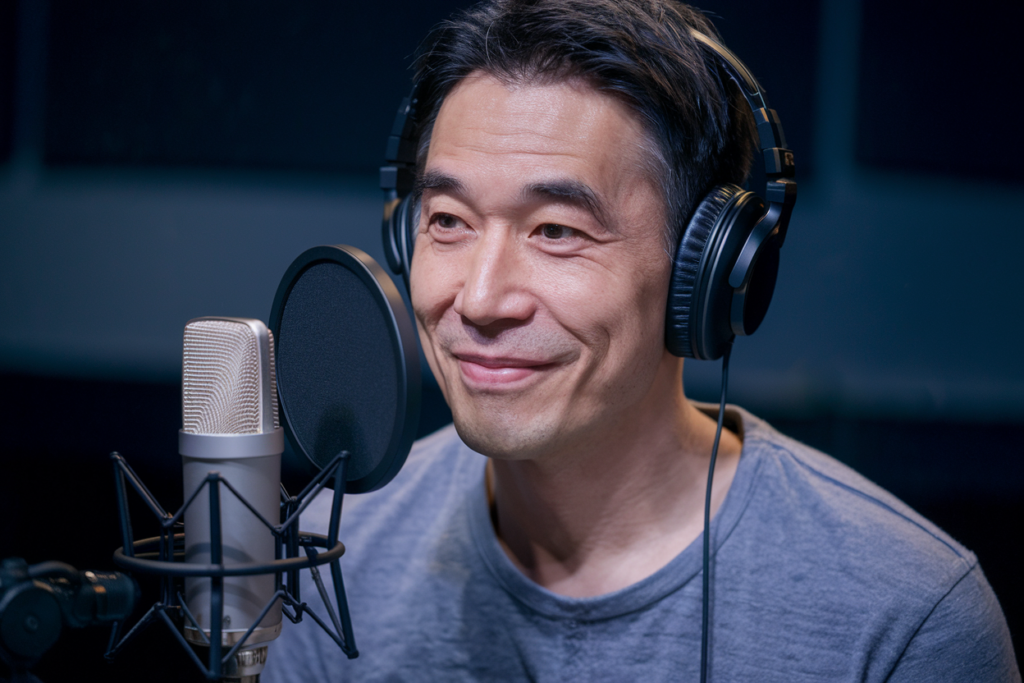Key Takeaways
- Understanding Synchronization: Japanese voiceover synchronization requires a blend of artistry and technical skill to align dialogue with character emotions and visual elements effectively.
- Importance of Timing and Pacing: Voice actors must match their delivery speed with on-screen action while considering emotional weight, using pauses strategically to enhance storytelling.
- Lip Sync Techniques: Accurate lip sync is achieved through phonetic matching and extensive practice, ensuring that dialogue aligns perfectly with characters‘ mouth movements.
- Essential Tools and Software: Selecting the right audio editing tools, such as Adobe Audition or Pro Tools, is crucial for producing high-quality synchronized voiceovers.
- Characterization and Emotion: Delivering believable performances relies on understanding each character’s personality and conveying genuine emotions to engage audiences effectively.
- Cultural Context Matters: Localizing content involves recognizing cultural nuances to ensure that voiceovers resonate with international audiences while preserving the original script’s intent.
Have you ever wondered how anime characters sound so perfectly in sync with their emotional scenes? That’s the magic of Japanese voiceover synchronization! If you’re diving into the world of voice acting or just curious about the process, this guide is your go-to resource.
Understanding Japanese Voiceover Synchronization
Japanese voiceover synchronization blends artistry with technical skill, creating an immersive experience for audiences. This process involves matching the dialogue of voice actors to visual elements, ensuring characters‘ emotions align seamlessly with their actions.
Voice artists play a crucial role in this synchronization. They must possess not only vocal talent but also an understanding of the character’s emotional depth and nuances. A skilled voice actor brings life to each line, making it essential that their performance resonates authentically.
Timing is vital during synchronization. The dialogue must fit within the duration of mouth movements and scene transitions. For instance, if a character speaks quickly, the voice over talent needs to deliver lines at a similar pace while maintaining clarity and emotion.
Cultural context adds another layer to this process. When localizing content for international audiences, it’s important that voiceovers reflect cultural references accurately while preserving the original intent of the script.
Collaboration between directors and voice actors enhances quality as well. Directors guide performances by providing feedback on tone and delivery, ensuring that every element aligns with the overall vision of the project.
Ultimately, successful Japanese voiceover synchronization requires dedication from both voice talents and production teams alike. By focusing on these aspects, you can appreciate how deeply synchronized audio elevates storytelling through engaging performances that resonate with viewers worldwide.
Key Principles of Synchronization
Japanese voiceover synchronization hinges on several crucial principles that enhance the overall viewing experience. Understanding these elements is essential for anyone involved in voice acting or production.
Lip Sync Techniques
Lip sync techniques are fundamental to achieving realistic character portrayals. You must ensure that the dialogue aligns with the characters‘ mouth movements. This requires precise timing during recording sessions, where voice artists often watch animated sequences while delivering their lines. Techniques like phonetic matching help achieve this, allowing you to focus on how each sound corresponds to a specific mouth shape. Utilizing visual reference points and practicing extensively can significantly improve your lip sync accuracy.
Timing and Pacing
Timing and pacing play a vital role in voiceovers for Japanese media. When delivering lines, you must consider both emotional weight and scene dynamics. Voice actors should match their delivery speed with the action unfolding onscreen; too fast can lose impact, while too slow might bore viewers. Additionally, effective use of pauses allows space for emotions to resonate with audiences, enhancing storytelling depth. By carefully balancing timing with pacing, you create an immersive experience that captivates viewers and brings characters to life.
This thoughtful approach to synchronization not only enriches character performances but also elevates the entire narrative within Japanese media.
Tools and Software for Synchronization
For effective Japanese voiceover synchronization, selecting the right tools and software is crucial. You’ll find various options available that cater to different needs in the voiceover industry.
Popular Software Options
- Adobe Audition: This powerful audio editing tool offers advanced features like multitrack mixing and noise reduction, making it ideal for voice artists aiming for high-quality recordings.
- Pro Tools: Widely used in professional studios, Pro Tools provides robust capabilities for recording, editing, and mixing sound. Its flexibility supports complex projects involving multiple voice actors.
- Reaper: Offering a budget-friendly alternative without sacrificing quality, Reaper enables you to customize your workflow while accommodating various plugins tailored for voiceovers.
- iZotope RX: Known for its audio repair features, iZotope RX helps enhance your recordings by eliminating background noise and correcting issues that may arise during the voiceover process.
- Avid Media Composer: If you’re involved in video production as well as audio work, Avid Media Composer integrates seamlessly with audio tools to ensure synchronized dialogue with visual elements.
Features to Consider
When choosing software for synchronization, consider these essential features:
- User Interface: Opt for intuitive interfaces that simplify navigation during the editing process.
- Audio Quality Controls: Look for options offering high-resolution audio settings to maintain clarity in your recordings.
- Multitrack Support: Ensure the software allows multiple tracks so you can manage different voices and effects easily.
- Export Formats: Check compatibility with common formats used in media production; this ensures your final output meets project specifications.
- Integration Capabilities: Choose programs that can integrate with other tools or hardware you might use—this enhances efficiency across production phases.
Selecting the right tools empowers you as a voice artist or actor to produce compelling performances that resonate deeply with audiences through precise synchronization techniques.
Best Practices for Effective Voiceover
Creating effective voiceovers requires a blend of skill and understanding. By focusing on characterization, emotion, and cultural context, you can elevate your projects significantly.
Characterization and Emotion
Characterization is key in voice over work. You must delve into the personality of each character, ensuring that your delivery reflects their traits accurately. Think about how they would speak—are they energetic, calm, or perhaps quirky? Matching your tone to the character’s personality enhances relatability and immerses the audience.
Emotion plays a crucial role too. As a voice artist, conveying genuine feelings brings characters to life. When you understand the emotional depth required in different scenes, it allows you to adjust your pacing and intonation accordingly. For instance, during dramatic moments, slowing down can amplify tension while quickening pace might inject excitement into action sequences.
Cultural Context in Voiceovers
Recognizing cultural context enriches voiceovers immensely. Different cultures have unique expressions and nuances that influence dialogue delivery. When localizing content for international audiences, ensure that cultural references resonate appropriately without losing the original intent.
Consider using idiomatic expressions familiar to target audiences while maintaining authenticity in character portrayal. This approach not only makes dialogue relatable but also fosters connection with viewers who appreciate nuanced performances rooted in their culture.
By honing these aspects—characterization and emotional depth alongside cultural understanding—you’ll find yourself delivering more impactful voiceovers that truly engage listeners.
Conclusion
Mastering Japanese voiceover synchronization is a rewarding journey that combines creativity and technical skill. As you dive into this art form, remember the significance of emotional authenticity and cultural context in your performances. By understanding the nuances of timing and pacing, you can breathe life into characters and engage audiences on a deeper level.
Utilize the right tools to enhance your craft and ensure precise synchronization. Embrace best practices that focus on characterization and emotional delivery. With dedication to these principles, you’ll elevate your voiceover work, creating memorable experiences for viewers worldwide. Your commitment will not only enrich storytelling but also resonate with fans across cultures.
Frequently Asked Questions
What is Japanese voiceover synchronization?
Japanese voiceover synchronization is the process of matching dialogue to visual elements in anime, ensuring that characters’ emotions resonate with viewers. It combines artistic expression with technical skills, creating an immersive experience.
Why is timing important in voice acting?
Timing is crucial because dialogue must align perfectly with mouth movements and scene transitions. Proper timing enhances believability and emotional depth, making performances more engaging for the audience.
What tools are commonly used for voiceover synchronization?
Popular tools for Japanese voiceover synchronization include Adobe Audition, Pro Tools, Reaper, iZotope RX, and Avid Media Composer. These software options help achieve precise audio quality and effective multitrack support.
How do cultural references impact voiceovers?
Cultural references play a vital role in localizing content for international audiences. Voice artists must ensure that their performances reflect these nuances while preserving the original script’s intent to maintain authenticity.
What should voice actors focus on during performance?
Voice actors should focus on characterization and emotion. Understanding each character’s personality allows them to deliver lines authentically while conveying genuine feelings, enhancing storytelling depth within scenes.







